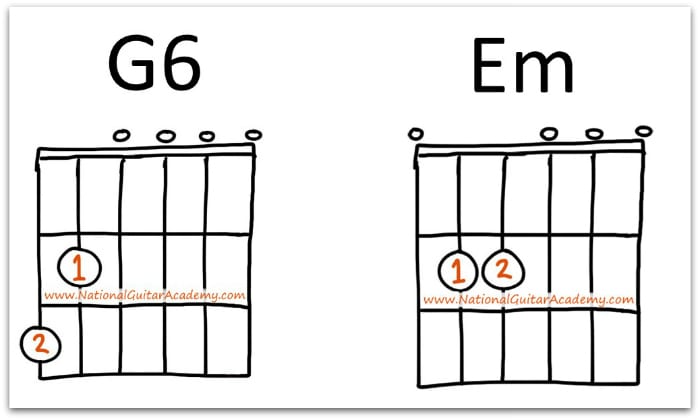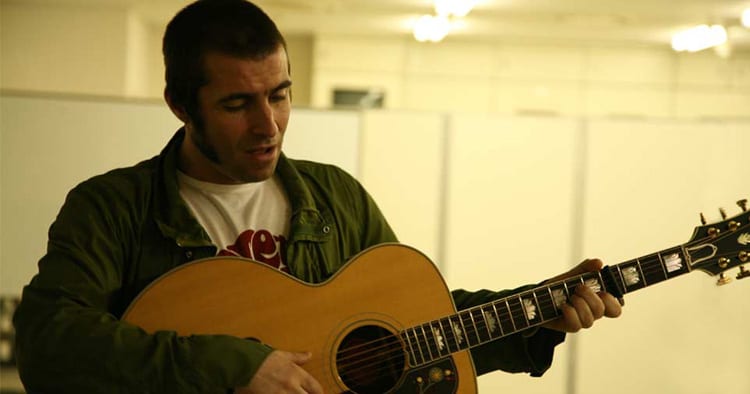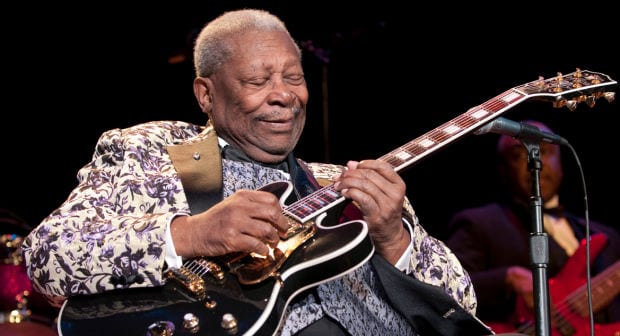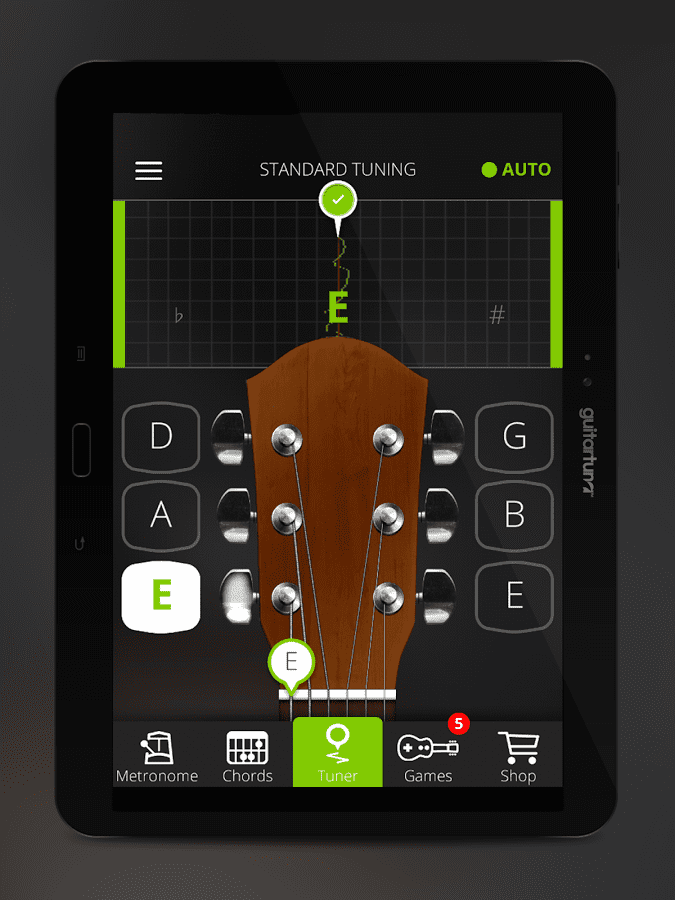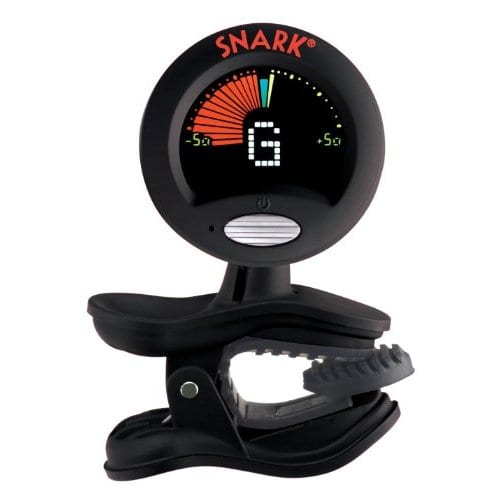Interested in learning to play guitar? You’ve come to the right place!
Over 100,000 guitar-learners get our world-class guitar tips & tutorials sent straight to their inbox:
Click here to join them Get our best guitar tips & videos
Between us, we have thousands of hours of experience both playing guitar and teaching guitar.
There are good ways and bad ways to learn, so in this article we’re presenting you with a proven 10 step framework for learning to play guitar that will help you avoid common pitfalls and set you on the path to righteousness.
We’re assuming if you’re reading this, you already have a guitar, but if not, check out this article to help find the right guitar for you: What’s The Best Beginner Guitar?
Learning to play guitar #1 Learn chords
No matter what kind of guitarist you want to become, be it a punk guitarist, a folk guitarist, a blues guitarist an experimental jazz guitarist… you will need to learn chords.
Chords are essential for all guitarists as they form the building blocks of our playing.
The first chords we look at should be easy chords. We don’t want to be stretching our fingers into all sorts of uncomfortable shapes. We want chords that we can realistically achieve before we try anything more challenging.
Two of our favourite chords are G6 and Em.
(If you don't understand the above image please read our article "How To Read Guitar Chordboxes In 60 Seconds". It will make everything clear!)
They’re great because it only takes two fingers to play each chord and one finger movement to change between them.
The first finger stays in the same place for both chords. It’s only the second finger we have to move.
If you want some ideas for other chords to start off with, check out this article: Guitar Chords For Beginners – 14 Easy Chords
✅ Stop struggling. Start making music. ✅ Learn beginner-friendly versions of every chord. This is our most popular guide and it will improve your chord ability quickly! 😎 Get a custom guitar-learning plan here: Click here for GuitarMetrics™ Learn from the world's best guitar educators: Click here for our guitar coursesLearn 12 EASY beginner chords with our popular guide


Where should we send it?
Get your own personalised guitar-learning plan 🎸
World-Class Guitar Courses 🌎
Learning to play guitar #2 Learn to strum
Knowing chords is great, but if we can’t strum those chords, there’s not a lot we can do with them.
For some reason, a lot of beginner guitarists are very baffled by strumming. They seem to think it’s a lot more complicated than it actually is.
All strumming really is is hitting the strings of the guitar with the guitar pick, either with a downward stroke or an upward stroke.
Nothing really complicated about that!
The confusion perhaps starts when we’re trying to figure out what combination of downstrokes and upstrokes we want to play.
Try taking a chord such as the G6 or the Em shown above and have a good strum of it.
Try strumming it downwards and upwards repeatedly.
This should help you get over any reluctance about strumming you may have.
Ideally, you want to get to a stage where you can hear a song and pick up the strumming by ear.
For more information on how to strum, check out this article: How To Strum A Guitar
Learning to play guitar #3 Learn easy songs
Obviously there’s a reason we want to learn chords and learn how to strum those chords.
We want to be able to play songs!
It’s a good idea when learning to play guitar to have a list of songs you want to be able to play.
This will help both you and your teacher, as you’ll both know what direction you’re heading in.
But how do we know which songs are easy and which aren’t?
It’s not always easy to tell, but the best thing, if in doubt is to put the song on the list anyway.
A difficult song can often be simplified down to make it more beginner friendly. For example we can move open chord shapes up the fretboard using a capo if we’re not ready for barre chords yet.
For more information on what a capo is, why you need one and how to use one, read this article: Capo Chart – Learn EVERY Chord Instantly
If a song is super hard, it’s still good to have it on our list. That way both you and your teacher have an idea of what you’re working towards. As you play more and more and get better and better, your definition of an “easy song” will become a lot broader.
If you’re struggling to think of songs you’d like to learn, check out this article for some possible ideas: Guitar Songs For Beginners
Learning to play guitar #4 Practice tips
It’s vitally important that when we learn any new skill that we practice.
Without practice, we simply will not pick up the things we need to know.
In order to get the most out of our practice we need to manage our time effectively, be patient and be realistic.
Want free guitar tips and video lessons delivered to your inbox?
Join over 100,000 guitar learners and subscribe to our guitar-tips-by-email service. (It's free.)
We'll send you a series of lessons that will move you to the next level of your guitar journey.
Learn how everything fits together quickly, easily and effectively. We share ninja tips (for instant fun!) but also timeless fundamentals that will deepen your understanding.


Get our best guitar tips & videos
Our Guitar Courses
To become a better guitarist click here to see our guitar courses
Get your personalised guitar-learning plan 🎸
Want us to make a guitar-learning plan that is customised to you? Click here for GuitarMetrics™
Practice a little each day, not a lot in one day
There are some students who will show up for lessons saying things like, “Sorry, I haven’t managed to practice this week. I was going to practice on Sunday, but something came up.”
Trying to cram an entire week’s worth of practice into one day is not sensible.
For one thing, you’re giving yourself a HUGE workload.
For another, if something comes up on the day you set aside to practice, then that’s all your practice time gone.
What’s far better is to pick up your guitar for a few minutes each day and work through your basic chords or whatever song or scale it was you’ve decided to learn this week.
That way, if something comes up on one day, you’ve only lost a few minutes of your practice time, not all of it.
Try and cement these few minutes into your daily routine.
Could be before work or school, after work or school, before bed, first thing in the morning; whatever best suits your lifestyle.
Set realistic goals
It’s great to be ambitious when learning to play guitar, but if we set goals that aren’t realistic we’re just going to frustrate ourselves and become disheartened.
If you just can’t seem to get that chord to sound right or just can’t seem to get that change fast enough or just can’t seem to get the rhythm right, chances are you’re asking just a bit too much of yourself a bit too soon.
The best thing to do is to get really good at the easy stuff first. Know it inside out.
When you want to challenge yourself, try something like picking a song that has maybe ONE difficult chord in it or ONE difficult change in it.
That way, you keep your frustration to a minimum.
Pick a song where every chord is difficult and it will be nothing but frustrating. It won’t be fun. You may even end up hating the song, and we don’t want that.
No matter what we’re practicing though, it’s always vital to be patient. Rome wasn’t built in a day.
Learning to play guitar #5 Scales
Learning chords and how to strum songs using those chords is how we develop a good grasp of rhythm guitar, but there’s also lead guitar.
As guitarists, we may have a preference for one or the other, but it’s a good idea to have a go at both.
Lead guitar is where we play melodies, riffs and solos using single notes rather than strumming chords.
The best way to get good at lead guitar is to learn scales.
Scales are the patterns of notes from which we can improvise and compose our own melodies, riffs and solos.
A great scale to start off with is the open position E minor pentatonic scale:
Not sure how to read tab? No problem. Check out this article: How To Read Guitar Tabs
This scale’s great because it uses all the open strings and we can play it using just two fingers.
We can also use it to jam in pretty much any style as long as it’s in the key of G major, E minor or an E blues.
Want to have a go at some more scale patterns? Check out this article: Beginner Guitar Scales: 5 Essential Scales
It's hard to understand which scales work with which keys.
So we created a cheat-sheet! A key and scale-finder that you can use again and again. Get a custom guitar-learning plan here: Click here for GuitarMetrics™ Learn from the world's best guitar educators: Click here for our guitar coursesDownload our lead guitar cheat-sheet to make things easier
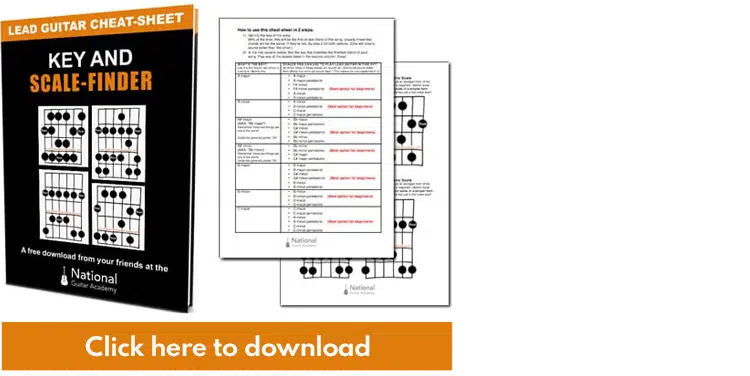
Get your personalised guitar-learning plan 🎸
World-Class Guitar Courses 🌎
Learn to play guitar #6 Get into improvising
Improvising, much like strumming is another thing beginner guitarists can be oddly reluctant to get stuck into at first, but once you get started, improvisation is great fun!
It’s also a vital skill.
Learning songs note for note is all very well, but it can be quite time consuming.
With improvising, we can launch straight into playing creatively.
The best way to improvise is to take a scale such as the E minor pentatonic shown above and see what you can create with it by trying out different notes from it in different orders.
Ideally to do this, we need a backing track or a friend to strum some chords for us.
The E minor pentatonic is ideal for jamming along with this backing track:
Want to learn more about improvising with the E minor pentatonic scale? Check out this video by Mike for some great tips:
This leads us onto our next point…
Learning to play guitar #7 Seek out other musicians to play with
Chances are, if we’re learning to play guitar, we eventually want to play with other musicians, perhaps form a band or an acoustic duo or such similar.
If we seek out and get to know other musicians then the chances are we’ll start getting invited to jam and collaborate with them.
By doing this we can see how other musicians play and it can give us ideas for our own playing.
Other musicians might introduce us to chords we’ve never heard of before or get us listening to bands and artists we’ve never heard of before.
Playing with other musicians can open up a whole new world to us and really encourage us to get practicing.
If you’re not sure how to go about meeting other musicians, try mentioning in conversation at work or at school or at the pub that you’ve been learning to play guitar.
You might find some of your friends or colleagues have been as well. Or perhaps they’ve been learning drums or bass or keyboards.
If that’s the case, there’s a potential jam session on the cards!
Check out this article from All Women’s Talk on how learning a musical instrument can help improve your social life: Wonderful Benefits Of Playing A Musical Instrument
Learning to play guitar #8 Find a local guitar teacher
When learning to play guitar, there really is no substitute for the help and guidance of a good teacher.
Sure you can go onto Youtube and watch some tutorials, but these are often put together by guitar players, not guitar teachers. They aren’t always professional and they aren’t always particularly clear.
They’re also a bit impersonal.
Whereas to a Youtuber, you’re just one of many subscribers who they don’t really know all that well, with a teacher you can develop a good professional relationship.
They’ll be working with you, charting your progress and helping you every step of the way.
If you can’t find someone local, you can always sign up for an online course and/or get yourself a good book to work through.
Learning to play guitar #9 Learn to tune your guitar
If we want anything we learn on the guitar to sound good, our guitar needs to be in tune.
Eventually it’s good if we can learn to tune by ear, but first things first, we want to tune by using a tuner.
A good tuner is an absolute must for the beginner guitarist.
Thankfully, these days there are plenty of good quality guitar tuners available that we can use to tune ourselves in.
If you have an iPhone, there’s a free guitar tuner app you can get called GuitarTuna.
There’s also tuners like this that you can plug your electric or electro-acoustic guitar into. They also have an inbuilt microphone for tuning acoustic guitars.
Then there’s tuners like this that clip onto the headstock of your guitar and detect the vibrations as you play the strings.
For more information on how to tune your guitar, check out this article: How To Tune A Guitar
Learning to play guitar #10 Learn to read tab and chord diagrams
We mentioned this briefly earlier, but it bears repeating.
The only way you’re going to be able to learn chords, scales, riffs and anything else you might want to play on guitar is by learning to read them somehow.
Thankfully, you don’t have to learn to read standard music notation, but you will need to know how to read chord diagrams and tab.
There’s something very painful and tedious about watching people trying to figure out chords and riffs by staring and squinting at other guitarists’ fingers.
This is a very clumsy and inefficient way to learn guitar. It is often very difficult to tell what another guitarist is doing with their fingers, and even if you can, other guitarists aren’t always going to be there.
Often when you practice, it’s just you sat alone in your living room.
When that’s the case, you’ve no choice but to work from chord diagrams and tab.
Fear not though, neither of these things are anything to be scared of.
- To learn chord diagrams, check out this article: How To Read Guitar Chord Boxes
- To learn tab, check out this article: How To Read Tab
Take our 60-second quiz & get your results: Take The Quiz Click here to learn more about National Guitar Academy membership Look cooler! Check out our merch: Click here to see our merch store Join over 100,000 guitar-learners and subscribe to our guitar-tips-by-email service. (It's free.) We'll send you a series of lessons that will move you to the next level of your guitar journey. Learn how everything fits together quickly, easily and effectively. We share ninja tips (for instant fun!) but also timeless fundamentals that will deepen your understanding.What Type of Guitarist Are You?
Join the world's best online guitar school 🌎
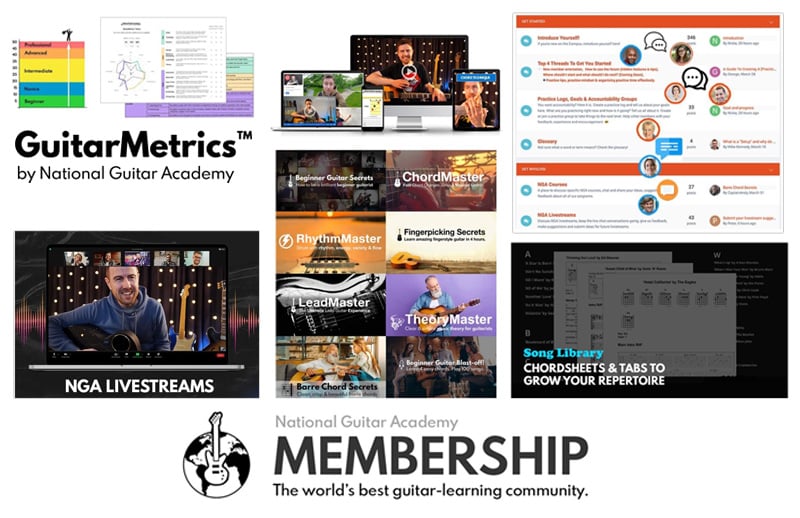
Cool Guitar T-shirts 😎
Want free guitar tips and video lessons delivered to your inbox?


Get our best guitar tips & videos
How To Learn Guitar: An 11-Step Programme For Beginners How To Choose The Perfect Beginner Guitar Learn about National Guitar Academy: About Us Join us on Facebook for daily guitar tips. Listen to our Learn Guitar Podcast for rapid guitar progress. Check out our free chord lessons.Popular Lessons
More Cool Guitar Stuff


